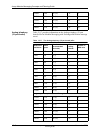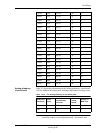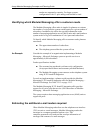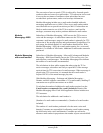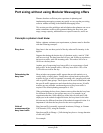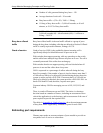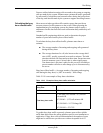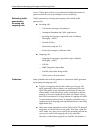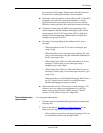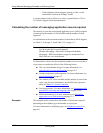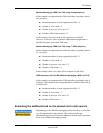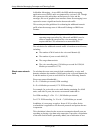
Avaya Modular Messaging Concepts and Planning Guide
12-24 November 2004
Avaya Modular Messaging Concepts and
Planning Guide
service. If busy hour calls are overestimated, the additional number of
ports increases the cost of providing the service needlessly.
Estimating traffic
generated by
incoming and
outgoing calls
Traffic generated by incoming and outgoing calls include traffic
generated by:
! Incoming calls
— Call Answer messages, including fax
— Automated Attendant and Caller Applications
— Incoming fax messages (Applicable only to Modular
Messaging—MSS)
— Find Me (Caller)
— Subscribers using the TUI
— Record (for example, conference calls)
! Outgoing calls
— Outgoing fax messages (Applicable only to Modular
Messaging—MSS)
— Call Me
— MWI (Integration-dependent)
— Find Me (Subscriber being called)
— Client Access via dual connect
Guidelines Some guidelines that will help planners to estimate the traffic generated
by incoming and outgoing calls:
! To place an outgoing call, the MAS makes use of a port. The
traffic generated by these features can significantly affect the
GOS if this traffic is not included in the estimate of busy hour
offered traffic. If outcall delivery traffic is managed so that the
majority of it occurs outside the busy hour, the impact on busy
hour GOS is minimized. If a large amount of outgoing call traffic
is expected during the busy hour, it might be preferable to size a
separate group of outgoing ports and dedicate them to outcalling
applications only.
! With some switch integrations, such as QSIG and H.323-based IP
integration, a Find Me call uses two ports. Each time a Find Me
call is made, one voice port is used for the incoming call and one
voice port is used for the outgoing call to the subscriber.
Therefore, if subscribers regularly use Find Me, the number of



